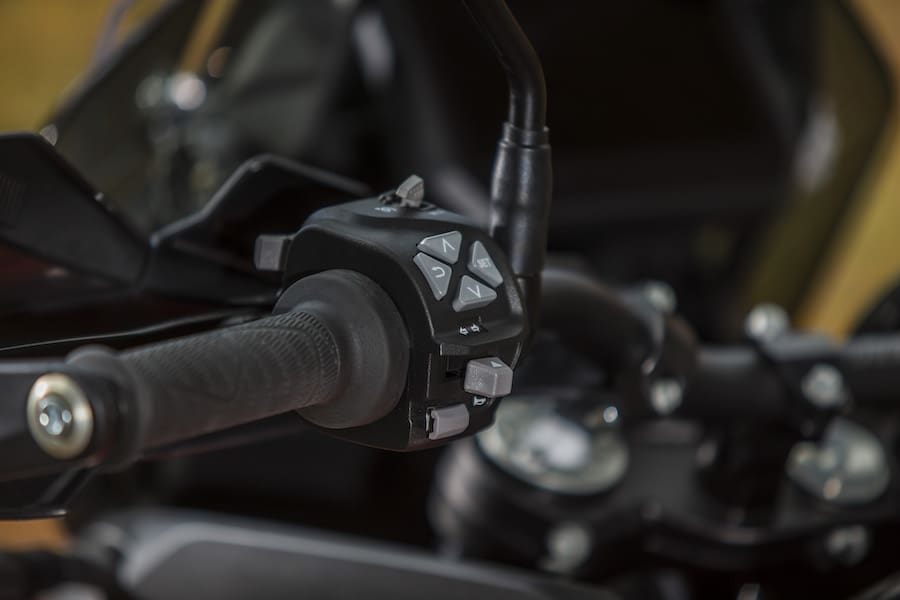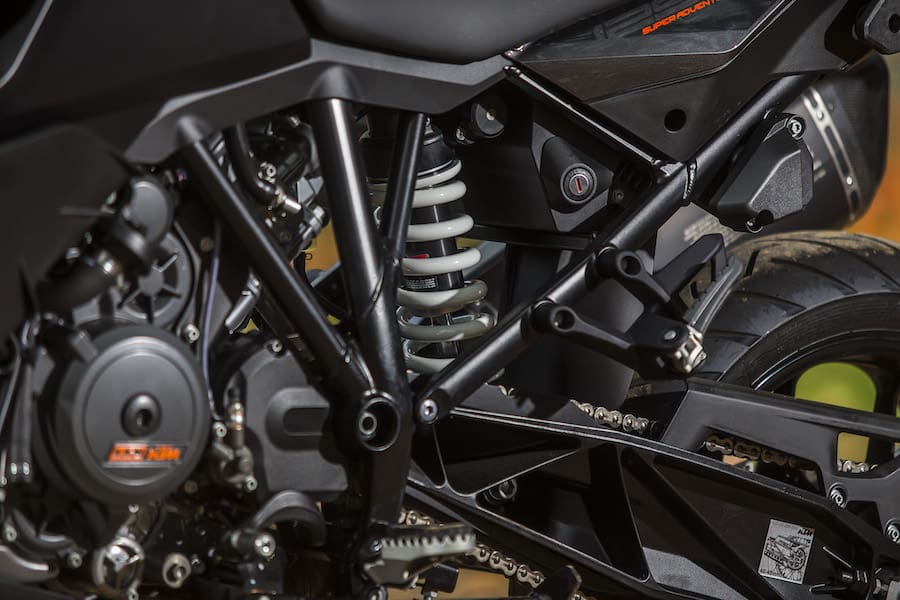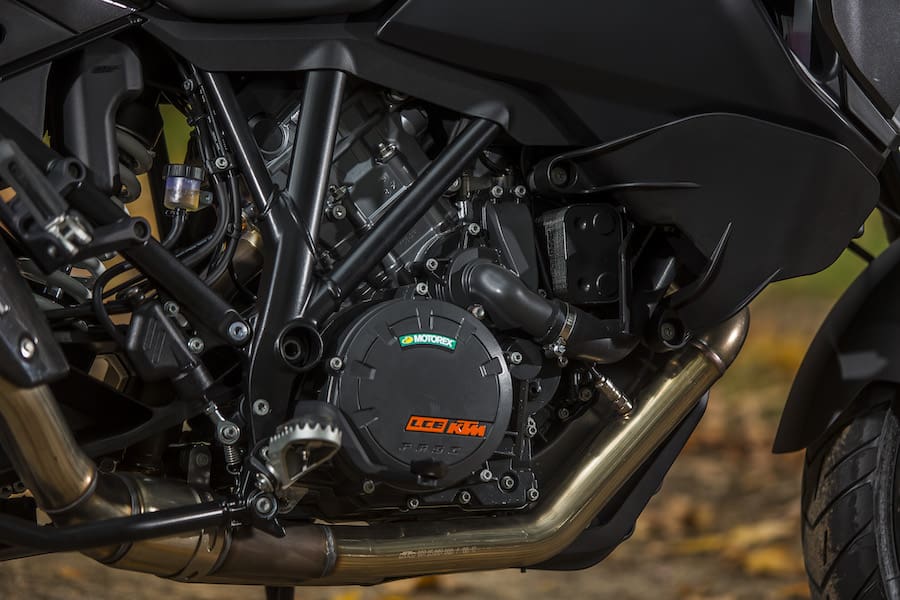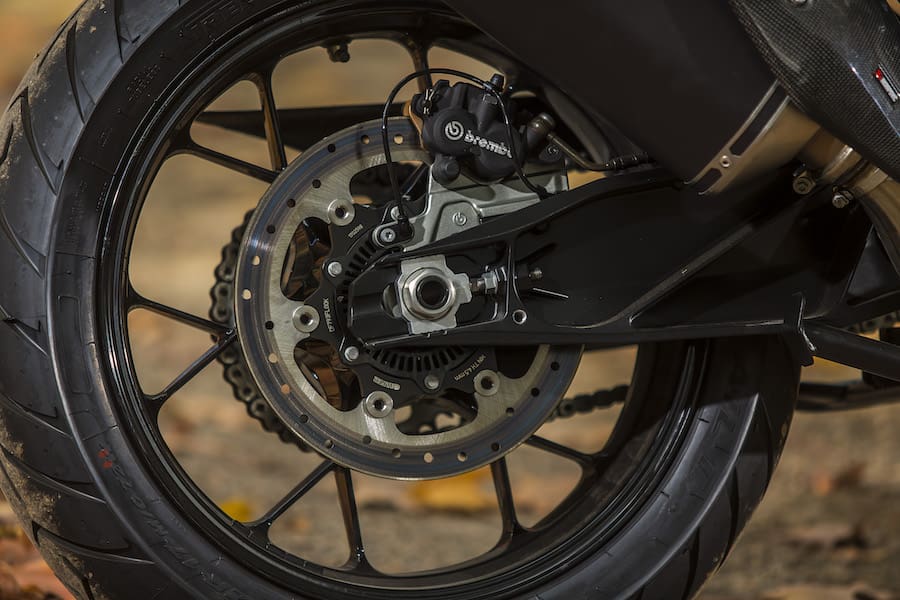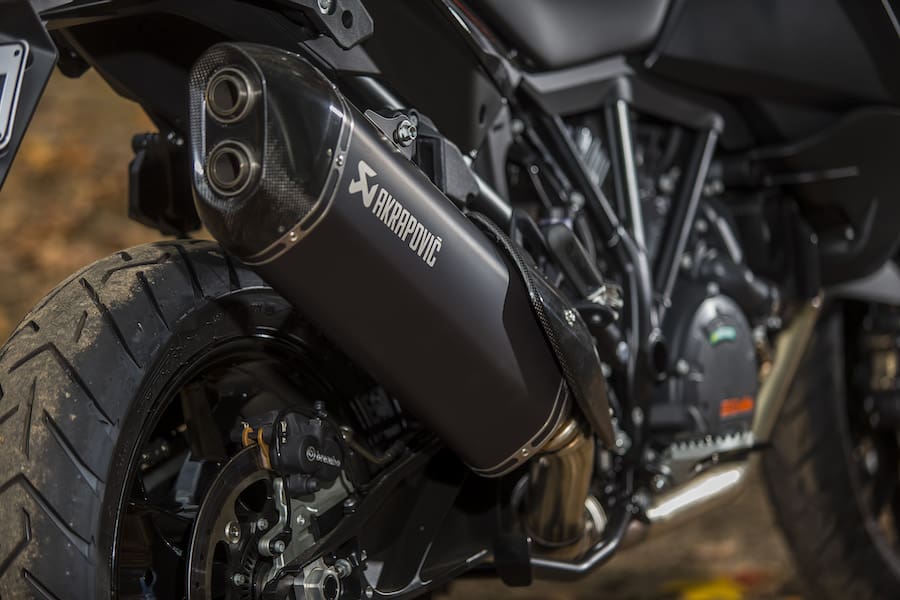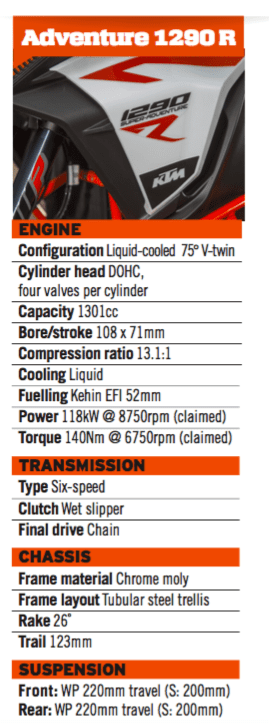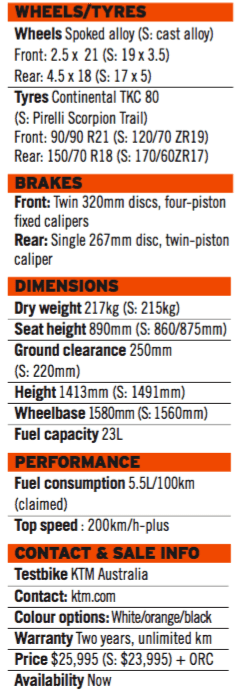When 1989 world 500 motocross runner-up and KTM Australia general manager Jeff Leisk talks, the room falls silent. Then former Romaniacs winner and general lunatic on a bike Chris Birch chimes in with his input. Technical wizard Rob Twyerould imparts wisdom and casts a spell with his complete product knowledge. We’re left in no doubt at this press conference that we’re about to ride a trio of very important bikes for KTM.

Everybody loves a good adventure, and the Austrian brand gave us a triple treat when it launched the new 1090 Adventure R, 1290 Super Adventure R and 1290 Adventure S in the Blue Mountains district of New South Wales. These are three bikes I have been drooling over since news of them first broke, so finally getting the chance to throw my leg over these 75º V-twins was the stuff of dreams.
Testing them all properly in one day was impossible, but a loop of more than 300km from Katoomba to Sofala for lunch by dirt, then back on the asphalt in the afternoon, would give us a great chance to ride two of the three. Which ones would I get?

After breakfast the keys were randomly dished out and my day started well because I ended up with a keyless-type fob that clearly belonged to the 1290 R. Ogling the bike for the first time in the flesh made it easy to see the effort that has gone into making this the flagship of KTM’s Adventure range.
There are so many nice touches and aesthetic changes, from the cockpit all the way to the internals of the suspension, that come together to create the toughest-looking KTM adventure bike yet. When you first view it the new headlight is the centrepiece of attention with its trick LEDs and built-in daytime-running lights. It also features a lean angle-activated system built into the lower portion of the unit for better night vision.
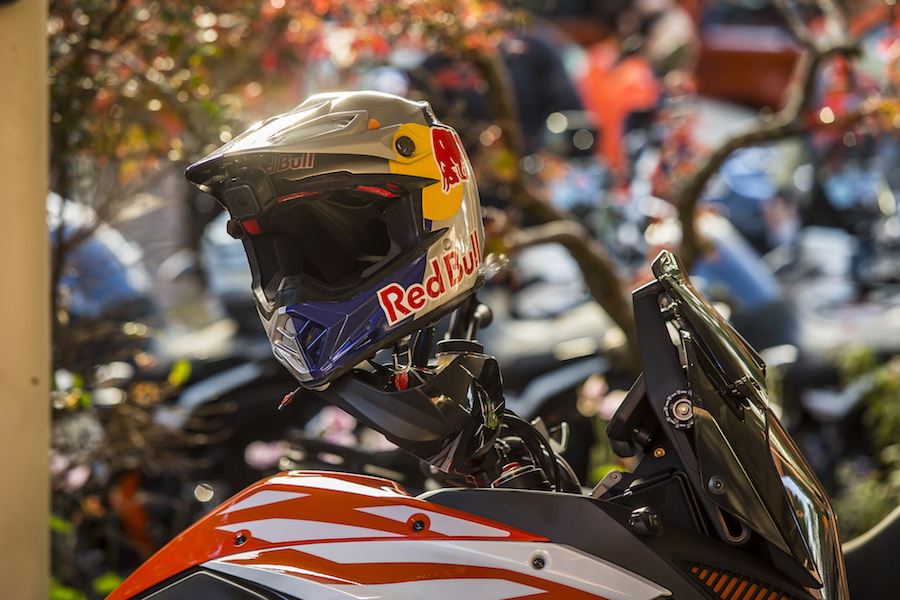
The beautifully moulded tank provides 23 litres of fuel but hangs low over the backbone of the frame to keep it streamlined, making this big beast feel relatively small.
The TFT (Thin Film Technology) dash, which is adjustable for angle, is also completely new. It provides a huge range of information that can be added to the readout or taken off at will with its full customisation facility.
Another new feature this year is that the bike comes smartphone-ready, allowing you to integrate your devices through that new dash if you decide to buy the extra Travel pack. And there’s no need to wonder which pocket to put your smartphone in because KTM has introduced a dedicated storage pocket with a USB plug inside on the right-hand side of the steering head.
The cruise control buttons have been moved to the left-hand switchblock for easier access, and the ’bars are adjustable 10mm back and forth, providing more ergonomic comfort to a wider range of rider sizes.
The engine, based on the Super Duke R and basically the same layout as the last year’s 1190, has a few differences. It pumps out 119.3kW in its most aggressive engine mode (Sport) and gives the rider 140Nm of torque to play with. It’s quite a rev hound with a reasonably short stroke and, in line with the KTM philosophy, it’s got a racy feel rather than being a plodder.

KTM has also retained the backbone of the great-handling 1190. The frame is of similar geometry, although the headstock has been modified to incorporate lower-maintenance bearings to improve the service schedule and improve longevity.
The suspension is still KTM WP equipment, but it’s been further beefed up with stiffer springs in the front and a higher-spec rear shock with better bottoming resistance. The swingarm is unchanged and there’s a centrestand fitted (which ended up being a godsend for me).
Although the bikes are sold with tubeless tyres, KTM fitted tubes to all the test bikes to allow the use of lower pressures without the automatic tyre pressure monitoring system bleeping constantly (it cuts in below 32psi). A few of us ended up with punctures on the off-road section and bush repairs were the flavour of the day. Pulling the rear wheel out in those conditions makes you appreciate how well these KTMs have been designed. The rear brake caliper stays in place and just the one axle bolt has to be removed to remove the wheel. The swingarm even has a spot to hang the chain on, which made it all too easy.

‘Easy’ is also a good word to describe the riding experience on the 1290 R. The keyless ignition means you only need to have the key in your pocket – just flick a switch to turn it on, then thumb the starter. The gearbox snicks nicely into first and the clutch is light.
The seat height is definitely elevated at 890mm and for a 173cm-tall rider like me (with short legs) it’s a stretch to the ground.
As you engage that light clutch, however, the seat height doesn’t matter. The perch itself is comfortable and the slow-speed balance of this machine is great – as you’d expect of a bike that started life as a racer and not a roadbike.
As you flick through the gears on the road it feels like a big off-road bike with that 21-inch front wheel. The Continental TKC 80 tyres are more than good enough on the road to let you enjoy the scenery passing by at sensible speeds.
The first thing I did when we got on the outskirts of Katoomba was check the ambient temperature on the dash and it was in single figures. But there were no heated grips; you can order them, but unfortunately they aren’t standard equipment.
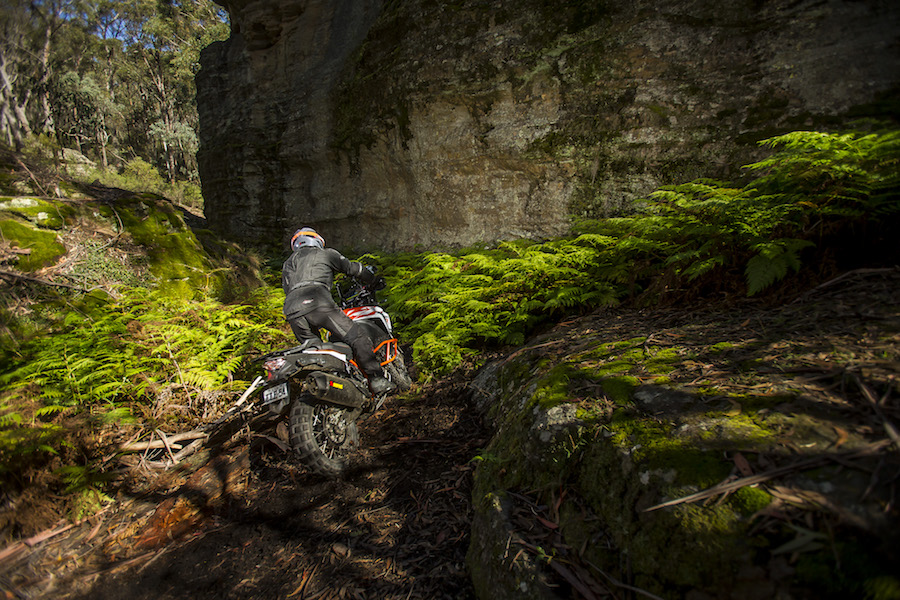
At least cruise control is standard, and the good news is that it’s now fitted on the left ’bar. With a single switch to do everything, it’s easy to use, but using the button to increase speed still takes longer than I’d like.
That new dash is certainly the centrepiece when you’re riding and it’s easy to get in and out of the various rider modes and rider info screens with the left-hand switchblock buttons.
Of course, this bike’s strength is off-road adventure, so as soon as we hit the dirt I knew we would be having some fun. The first thing I noticed was how the bike suddenly feels as light, agile and slim to ride as a 450.
When riding any adventure bike off road I feel the need to stand up, and for me the adjustable bars might have been better in the forward position as I found I had to hold my weight with my arms a bit.
The handling off road, though, is very good, as you’d expect from a bike with the pedigree of the KTM. It held its line, braked straight and power-slid like a champion – all with a ton of feel to make even an average rider feel more in control and more confident.
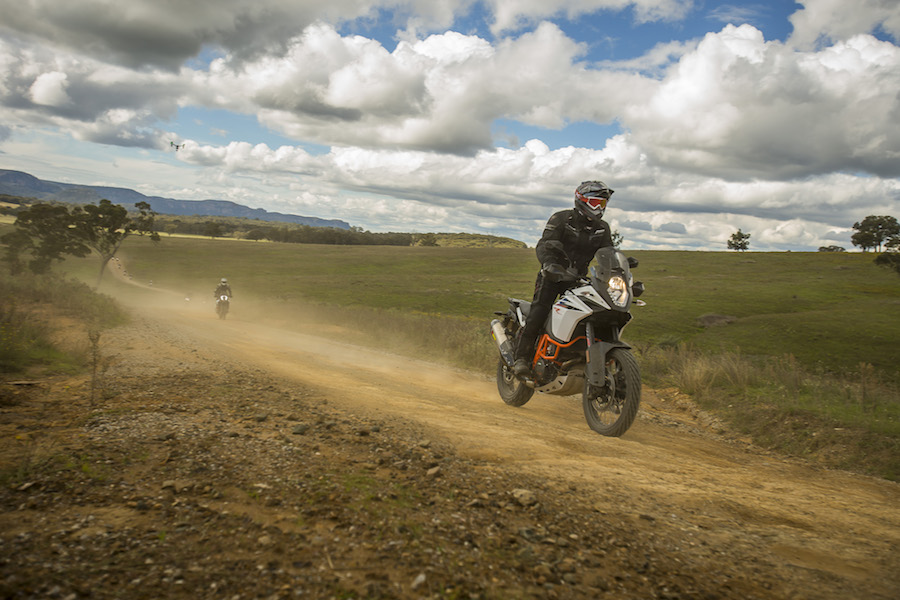
On the rough and potholed Blackfellows Hand Track in the Newnes State Forest, though, the
1290 R had to be ridden with care as even its beefed-up WP suspension had trouble absorbing the hard rock edges and cavernous voids caused by torrential rain the week before. This bike might feel like a 450 but it’s still a heavy flagship tourer.
After a couple of hours on the 1290 R, I was thrown the key to a new 1090. Was I disappointed? No way. If you want to go berserk on a big-bore adventure bike, this is the one to do it on.
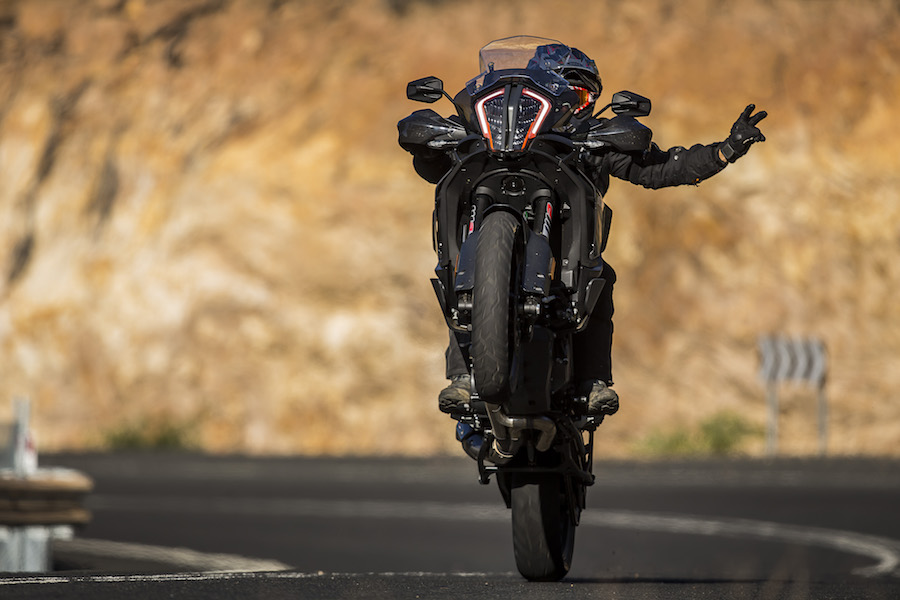
The 1090 has virtually the same dimensions as the 1290 and they share the same frame and swingarm set-up. The 1090 doesn’t have the new dash, or the fancy headlight. It’s a lot more basic and similar in a lot of ways to what KTM has offered in the past. It certainly doesn’t have the 119.3kW of the 1290 either, but it benefits from its simpler nature.
First and foremost, it’s lighter, which makes it even more nimble off road than the 1290. It still has more than enough power to get the job done in the dirt and when I was sliding towards the trees with the look of terror in my eyes I didn’t once wish I had more ponies on tap.

The lack of extra bits and technology also means that the retail price is under $20,000, making it very good value for money. It’s not built cheaply though, and still retains quality fittings with names like Magura, Brembo and WP plastered over a lot of the major components. This is the bike the hard-core guys will probably go for. And I understand why after watching Chris Birch riding around on the 1090 for most of the day – he made it look like a cruise missile.
I also clocked up some road miles on the 1090, and that’s when you realise why the bigger bike costs six grand more. You miss the cruise, the dash and the extra torque made by the 1290 R, but all these things are soon forgotten when it’s your everyday ride; they only become apparent when you ride the bikes back to back.
All in all, I wish I could have the three of them in my garage and employ people to dot them around the route I have chosen to ride that day so that I would have the perfect bike for the perfect moment. These three KTMs all have different personalities and, although we only had a taste in our mad scramble around the Blue Mountains, I liked what I saw.
TEST STEVE MARTIN PHOTOGRAPHY IKAPTURE
